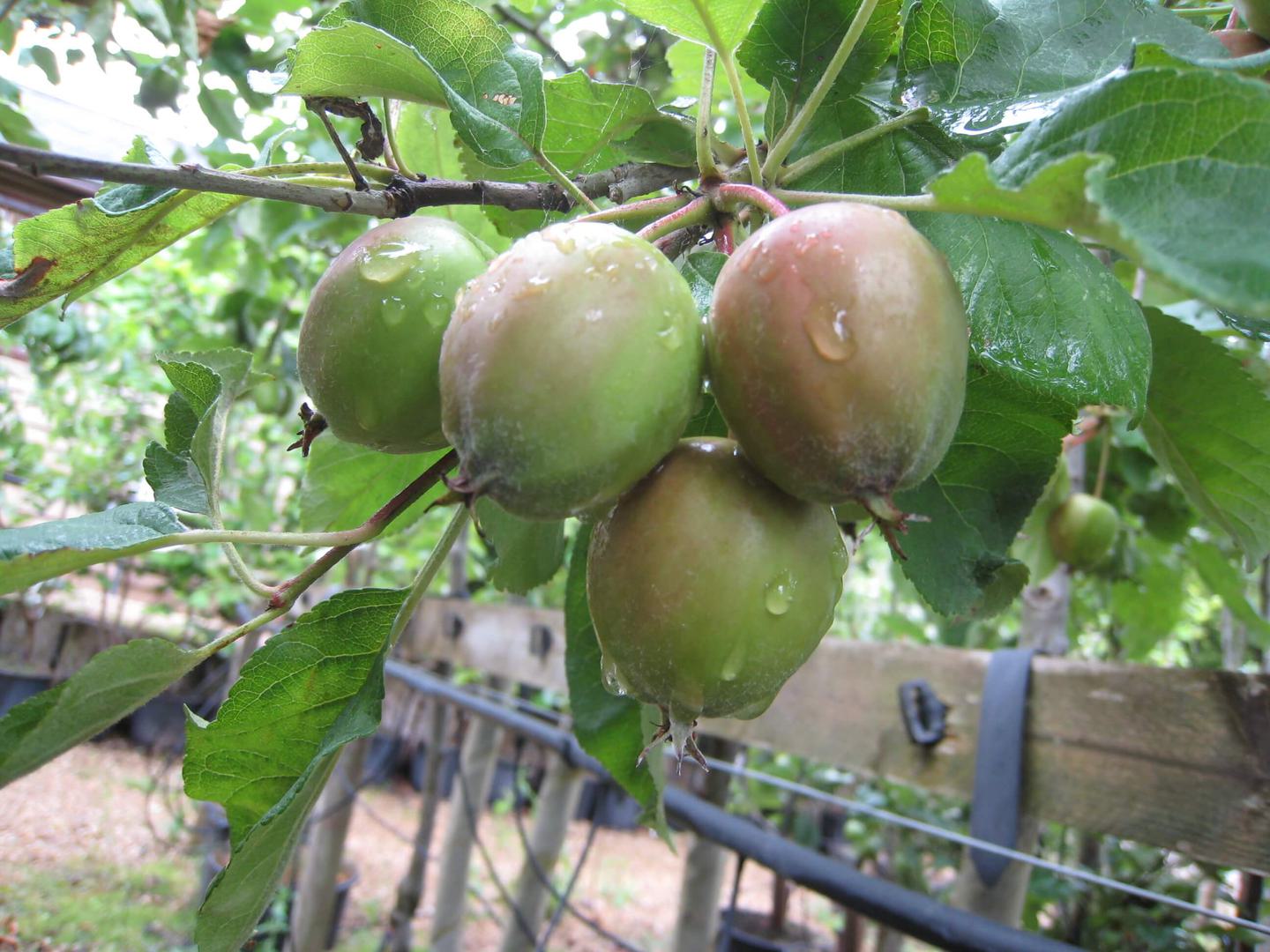Guides
Improving fruit size and quality
There is nothing more satisfying than picking and eating your own home grown fruit straight from the tree. It’s tempting to allow a heavy crop to form on the tree, but this can result in smaller fruit and a risk of having little or no fruit at all every other year.
It is common to see a number of small fruits on the floor in summer. This is mainly because your fruit trees have their own way of dealing with excessive fruit by producing a hormone that results in self thinning. This is normal in apples, plums, pears, peaches and cherries and is known as the ‘June drop‘. As a result remaining fruit gets more light and has space to grow. It also prevents excessive weight on the branches, which might cause them to break. Wait until the natural June drop has occurred before deciding whether to perform any additional deliberate thinning.

When you do, start by removing what is known as the king fruit. This is found at the centre of the cluster and is recognisable by a characteristic misshapeness, the fruit developing with a thickening to one side of the stalk. After removing this (where possible) aim to thin to a maximum of four fruits in a cluster of Cox for example, perhaps leaving only three for larger fruiting varieties such as Bramley.
In early summer (aim to do this before mid July) fruits are easily dislodged with a flicking motion. Do not agonise over selection, just look to create space. Where stubborn fruits occur just leave these, choosing weaker neighbours in each cluster instead.
Apart from improving size and shape in this year’s crop, you should also find the act of thinning contributes to regular cropping year on year. Leaving fruits on the tree in the hope of a heavy crop this year could result in much lighter crop the following year (or even no fruit development at all).